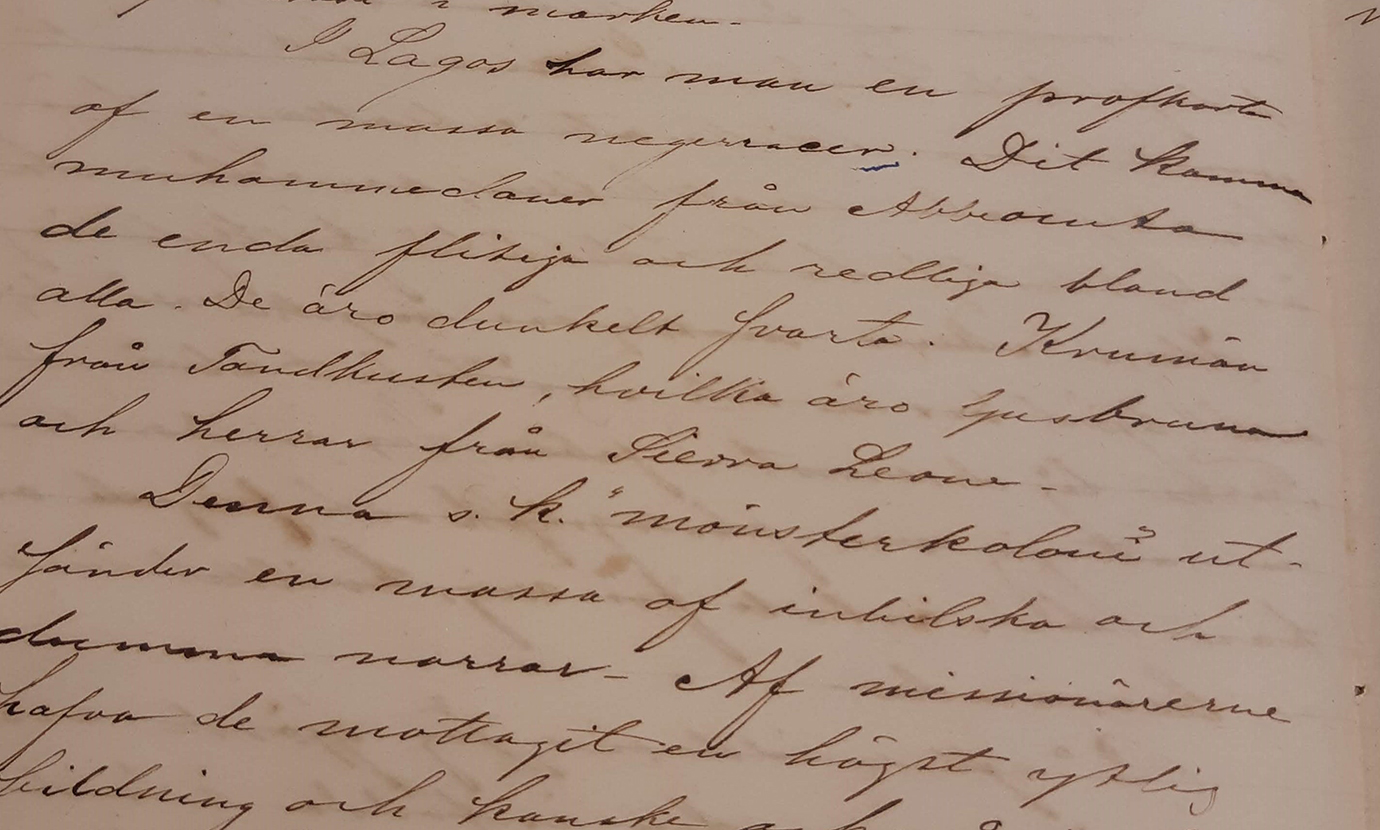Remixing the Future is an exhibition created by Diana Agunbiade-Kolawole, Andreas Nur, and Theresa Traore Dahlberg in collaboration with the Museum of Ethnography. While studying at the Royal Academy of Fine Arts, they were members of the group that founded the art collective OUFF. The group creates interdisciplinary site-specific works focusing on processes and the shared experience. The trio has researched the Museum of Ethnography's collections and archives from the African continent for a while.
In three separate works of art created in different mediums, the artists ask questions about style, memory, advertising, desire, colonialism, and family history. Through the aesthetics of the remix - to create something new from something old and make it their own - objects and photos from the museum's collections are placed in unexpected contexts, predicting different futures. Proven techniques such as still life, video collage, and bronze casting are used to bridge history and the present.
Ongoing Africa is a long-term project (2017-2021) at the Museums of World Culture attempting to activate the collections from Africa and stimulate new forms of knowledge about the continent, primarily in collaboration with people of African descent in Sweden and abroad. Read more about Ongoing Africa at varldskulturmuseerna.se
Remixing the Future opens October 9th, 2021, and ends January 9th, 2022.
Despite the challenges of an unprecedented historical period—charged by the BLM movement and severely circumscribed by the global pandemic—the work of Agunbiade-Kolawole, Nur and Traore Dahlberg in the museum resulted in diverse forms of expression ranging from video, audio, sculpture, and photography. Taking as points of departure established art forms like advertising, collage, and oral history, the three artists created intriguing ways of experiencing memory, style, places, colonialism, desire, and the often-winding migration histories of the African diaspora.
They employed an array of techniques such as still life photography, video collage, and brass casting to probe and dialogue with the materiality of historical artefacts and photographs. The ethos and aesthetics of remixing—to grasp something old to shape it into something new and making it your own—was a notable feature of the resulting works. Remixing points to possible future uses of the museum and the historical material charged to its care.
Before using the Museum of Ethnography’s collections, the three artists had to contend with the loud, authoritative voices of those who brought the artefacts and photographs to the museum. In this case, collectors include Ekman (sea captain), Bolinder (ethnographer), Kjersmeier (poet and connoisseur), in addition to numerous photographers (missionaries, travelers, colonial administrators). Frequently, their knowledge of the uses, functions, and original contexts of the objects were lacking, something the museum also failed to redress over the years. By inscribing into the museum catalogue their limited understanding, the collectors seem to drown out the multitude of personal experiences, world views and life trajectories embodied by the objects in their original context.
 Entry written in Lagos 1869 in the diary of Gustaf Henrik Ekman (1848-1870), Landsarkivet, Göteborg.
Entry written in Lagos 1869 in the diary of Gustaf Henrik Ekman (1848-1870), Landsarkivet, Göteborg.
Very few European collectors before African independence bothered to name artists and makers—sometimes their ethnic belonging would be mentioned—thus inserting themselves as agents of the artworks and artefacts.
Remaining were the sweeping and often racist judgements of the qualities and customs of African peoples. As these descriptions and representations linger in the museum catalogue, the result is an often-expressed view from visitors, especially those of African descent, that the museum’s presentation of Africa is toxic, paternalistic, and demeaning. The artists demonstrate that there are a multitude of creative ways to respond to such narrow views of the African past, present, and future.
*The collective OUFF also includes Afrang Nordlöf Malekian, Francine Agbodjalou, Cristian Quinteros Soto, Ehab Aljabi and Samuel Girma. It began among POC students at the Royal School of Art in Stockholm.